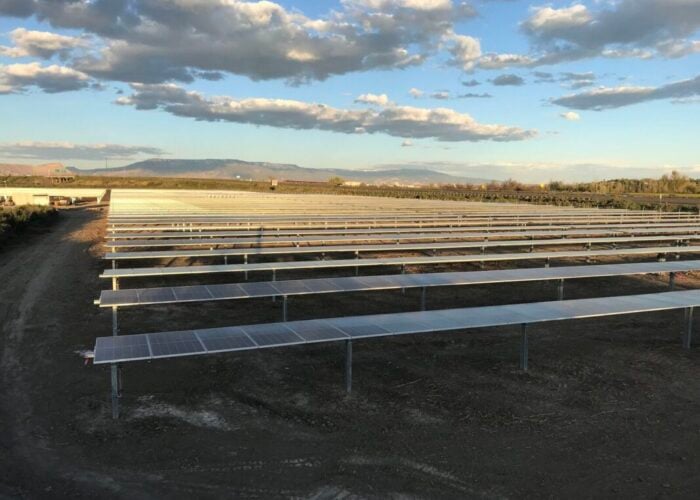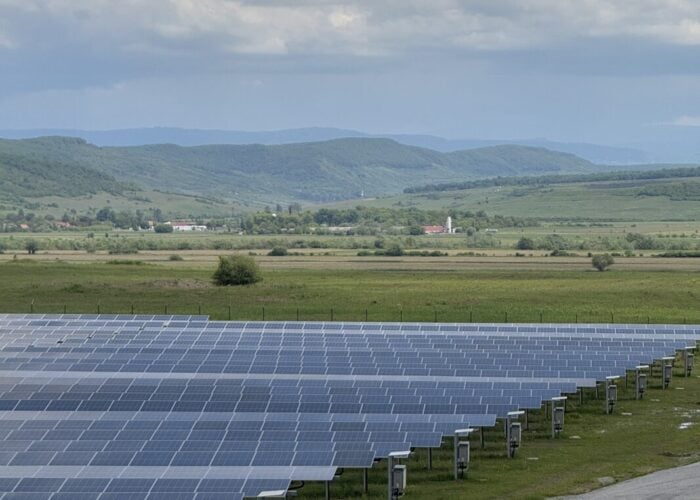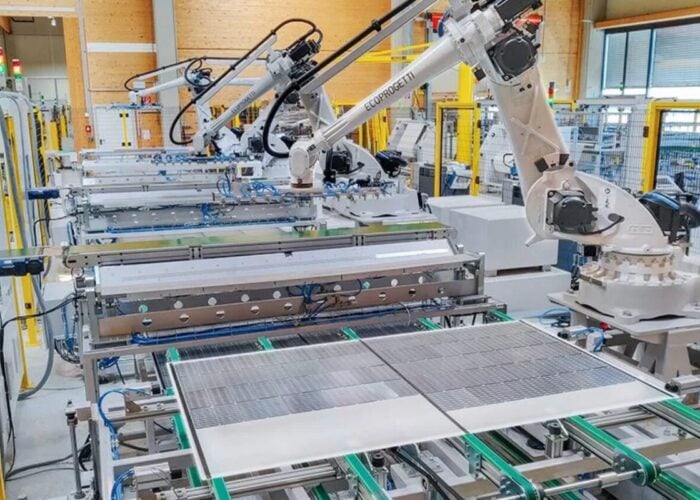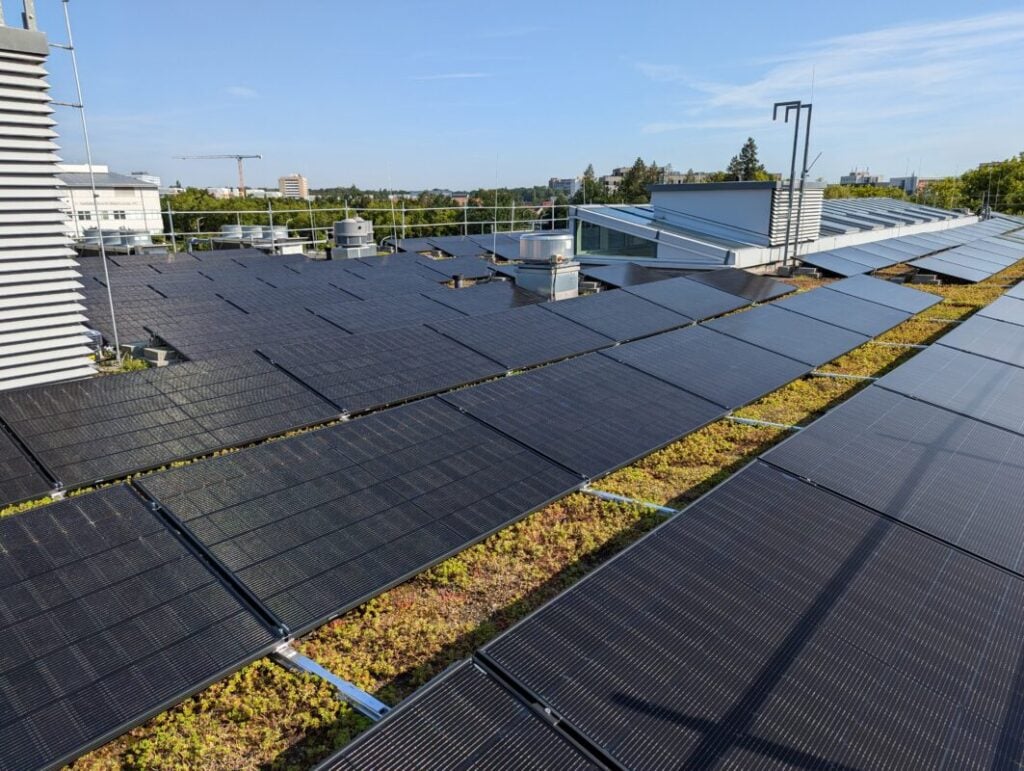
Shading has traditionally encumbered the rooftop solar sector with its susceptibility to shadows cast from obstacles like chimneys, trees, antennas and other buildings. However, a collaboration between German module manufacturer Aesolar and the Fraunhofer Center for Silicon Photovoltaics (CSP) could change the rooftop PV industry’s approach to shading with an innovation designed to mitigate its negative effects.
Their jointly developed segmented shade-resistant module technology aims to drastically reduce energy loss caused by partial shading, which has historically hampered solar panel efficiency and system profitability in systems with significant shading by obstacles.
Try Premium for just $1
- Full premium access for the first month at only $1
- Converts to an annual rate after 30 days unless cancelled
- Cancel anytime during the trial period
Premium Benefits
- Expert industry analysis and interviews
- Digital access to PV Tech Power journal
- Exclusive event discounts
Or get the full Premium subscription right away
Or continue reading this article for free
This innovation could lead to more efficient use of rooftop space, minimise reliance on power electronics and make system design easier. The implications for residential and commercial solar deployment are significant, particularly in urban areas where shading is often unavoidable.
Shade over solar performance
As Hamed Hanifi, director of technology and innovation at Aesolar, tells PV Tech Premium, almost 35% of rooftop PV installations in Europe are installed on buildings in a manner that is subject to partial shading.
“PV modules are highly sensitive to partial shading,” says Hanifi. “This means that even in very extreme scenarios, 5% shading of the module area can lead to a total shutdown of the affected module. It doesn’t matter what kind of module efficiency is installed, when it is shaded, it produces zero energy.”
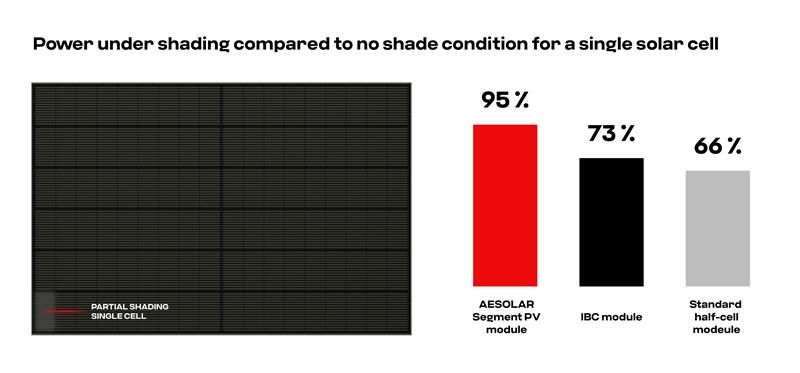
He suggests that theoretical energy yields, for example where customers buy modules based on watt peak ratings, are not as useful as real-world performance ratings, because what really matters is the energy produced or Euros per kilowatt-hour.
Recognising this gap led Aesolar to design its first generation of shade-resistant PV modules back in 2018 and then launch it into the market. However, these used one bypass diode, passive components that allow current to reroute around shaded cells without knocking out the whole panel, per solar cell, which became impractical due to changes in cell size, manufacturing standards and reliability demands.
The second generation was developed through the joint ‘SegmentPV’ project with Fraunhofer CSP. These shade-resistant modules can eliminate the need for power optimisers in many scenarios, leading to a lower levelised cost of energy (LCOE).
A segmented solution
The new modules use segmented designs with optimised placement of bypass diodes, enabling them to be used under partial shading conditions of any kind.
“The PV panel design and manufacturing procedures must be reliable for at least 20-25 years,” says Bengt Jäckel, group manager for PV modules, components and manufacturing at Fraunhofer CSP.
With half cut solar cells being the standard and mainstream product, it would be prohibitively complex and introduce more points of failure to add a diode for every cell. Consequently, the new design smartly groups cells together and uses advanced bypass diodes with which temperatures can be significantly reduced during diode operation.
In addition, keeping the design simple by reducing the number of parts being used can be an important step in helping the module withstand harsh operating environments in high temperatures.
The module is currently in the patenting phase so further details of its design cannot be disclosed.
Where anti-shading applies
The new module has been designed to have electrical parameters and dimensions close to that of other standard modules, says Hanifi. Rooftop solar installations are an ideal application for these anti-shading properties, including some of the larger commercial and industrial (C&I) rooftops.
Tropical countries like Vietnam that may have trees and vegetation growing around large-scale plants could find anti-shading modules also useful, but large-scale solar farms in deserts are less likely to need this technology due to minimal shading.
Residential rooftops, where the shading profile can change throughout the day and seasons, are the primary market. In this market, one of the key advantages of these new modules is that installers won’t need to perform complex shading simulations or leave valuable roof space unused.
As Jäckel says: “It’s just take it, install it, use it and produce a lot of energy without complex shading analysis on the roof. Just enjoy your PV system!”
Aesolar intentionally kept the new module within the standard 440W, sub 2m2 format to simplify logistics and installation. Keeping the module small enough means that only one installer is needed to go on the roof and mount it.
Pushed by the evolution of cell technology, Aesolar worked with Fraunhofer to evaluate standard passivated emitter rear contact (PERC) solar cells and compare it with the state-of-the-art tunnel oxide passivated contact (TOPCon) and heterojunction (HJT) solar cells. This was important because each of these cell technologies behaves differently under reverse bias conditions, which is crucial during partial shading.
Jäckel explains that TOPCon has reverse breakdown characteristics that are advantageous in the partial shading scenario, where it is less liable to overheating, which can cause de-contacting of the contacts, delamination of the encapsulation material or even glass breakage.
Rather than deeming the effect of shading on standard modules as a fault per se, Aesolar and Fraunhofer CSP are aiming to see it as an everyday and expected condition which they can both anticipate and mitigate.
“We don’t assume the shade as a faulty scenario,” says Jäckel. “We accept that it’s a daily scenario, and that’s what we are also testing … to see if this kind of repetitive heating and cooling cycle induced to partial shading is causing extra damage.”
Fraunhofer CSP has developed a new testing protocol to account for this partial shading in analyses.
Maximising the usable area of a roof for PV was one of the main drivers, so if adopted at scale, this innovation could reduce the amount of effort needed to design installations with maximised use of existing limited roof area. In short, with these modules, rooftop solar could become easier to design, simpler to install and more resilient in real-world conditions.
“We are not done,” says Jäckel. “But overall, that makes this whole installation process less painful.”



